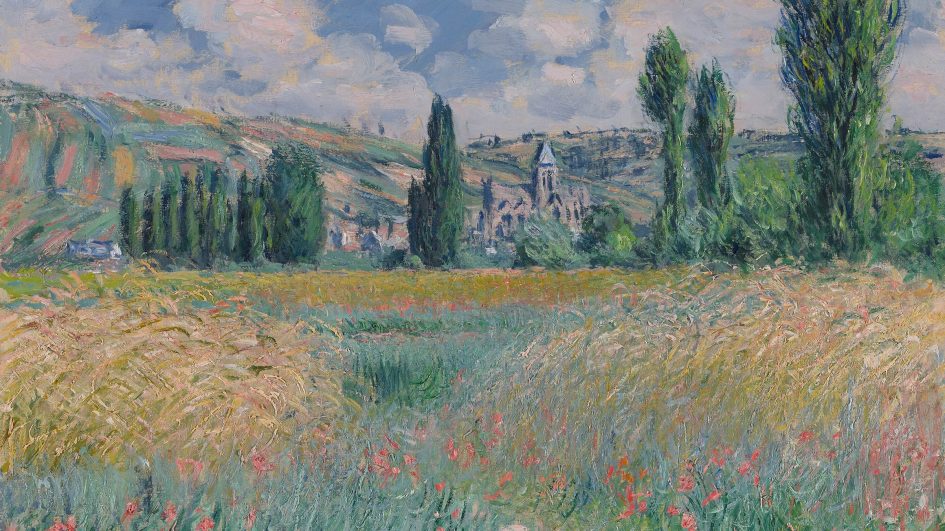Synonym of emotions in the direction of the arts
Impressionism is an art direction that originated in France in the late 1860s. Its representatives sought to capture the natural world’s mobility and variability in the most natural and unbiased way to convey their fleeting impressions. Special attention was paid to the transmission of colour and light.

The word “impressionism” comes from the name of Monet’s painting Impression: sunrise, presented at the 1874 exhibition. Little-known journalist Louis Leroy in his magazine article, called the artists “impressionists” to express his disdain. However, the name stuck and lost its original negative meaning.
The first important Impressionist exhibition was held from April 15 to May 15, 1874, in the studio of photographer Nadar. There were 30 artists represented, a total of 165 works. Young artists were accused of “incompleteness” and “sloppiness of painting,” lack of taste and meaning in their works, “an attempt on true art,” rebellious moods and even immorality.
The leading representatives of Impressionism are Claude Monet, Auguste Renoir, Camille Pissarro, Berthe Morizot, Alfred Sisley and Frederic Basil.
Landscapes and scenes from urban life – perhaps the most characteristic genres of impressionistic painting – were painted “en plein air,” i.e. directly from nature, and not based on sketches and preparatory sketches. Impressionists gazed intently at nature, noticing colours and shades usually invisible, such as blue in the shadows.

Their artistic method consisted of complex decomposing tones into their pure constituent colours of the spectrum. The result was coloured shadows and pure light tremulous painting. Impressionists applied paints in separate strokes, sometimes using contrasting tones on one part of the painting. The main feature of these paintings is the effect of a lively flicker of colours.
To convey the changes in the colour of the subject, the Impressionists began to prefer to use colours that mutually reinforce each other: red and green, yellow and purple, orange and blue. The same colours create a consistent contrast effect. For example, if we look at red for a while and then turn our gaze to white, it will seem greenish.

Impressionism did not raise philosophical problems and did not even try to penetrate the coloured surface of everyday life. Instead, artists focus on the superficiality, fluidity of the moment, mood, lighting or angle of view. Their paintings represented only the positive aspects of life without touching on acute social problems.
Artists often painted people in motion while having fun or relaxing. The subjects of flirting, dancing, staying in cafes and the theatre, boating, on beaches and in gardens were taken. Judging by the Impressionist paintings, life is a continuous series of holidays, parties, pleasant pastimes outside the city or in a friendly environment.
Impressionism has left a rich legacy in painting. First of all, it is an interest in colour problems and non-standard techniques. Impressionism expressed a desire to renew the artistic language and break with tradition as a protest against the painstaking technique of the masters of the classical school.

Impressionism is, first of all, something airy, ephemeral, inexorably elusive. I like that incredible moment that the eye barely has time to fix and remains in memory for a long time as a moment of the highest harmony.
Reference:
“Impressionism.” The Hutchinson Unabridged Encyclopedia with Atlas and Weather Guide, edited by Helicon, 2018. Credo Reference, https://search.credoreference.com/content/entry/heliconhe/impressionism/0. Accessed 03 Nov. 2021.
https://www.metmuseum.org/art/collection/search/436965
“Impressionism.” The Harvard Dictionary of Music, edited by Don Michael Randel, Harvard University Press, 4th edition, 2003. Credo Reference, https://ezproxy.capilanou.ca/login?url=https://search.credoreference.com/content/entry/harvdictmusic/impressionism/0?institutionId=6884. Accessed 03 Nov. 2021.

November 9, 2021 at 11:21 pm
Liza,
I’m a bit confused here. You are writing about Impressionism in the general sense which makes me wonder if this is a blog post for another class, maybe Judy’s. If it was for 131 then you were to write about an individual painter from this period I did not lecture on. What is the answer here? If this isn’t for 131 then you are overdue for the third posting. Please let me know.
Jeff